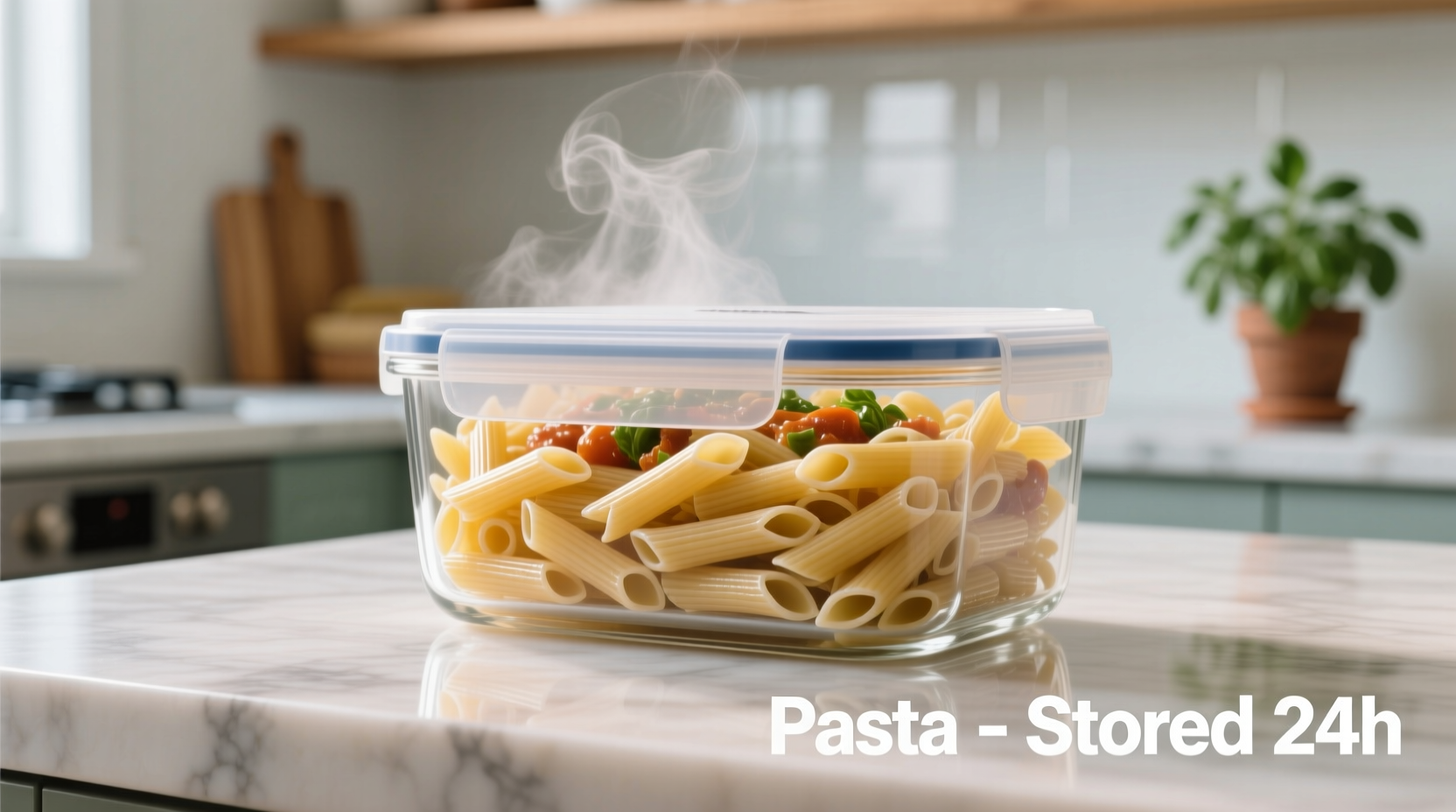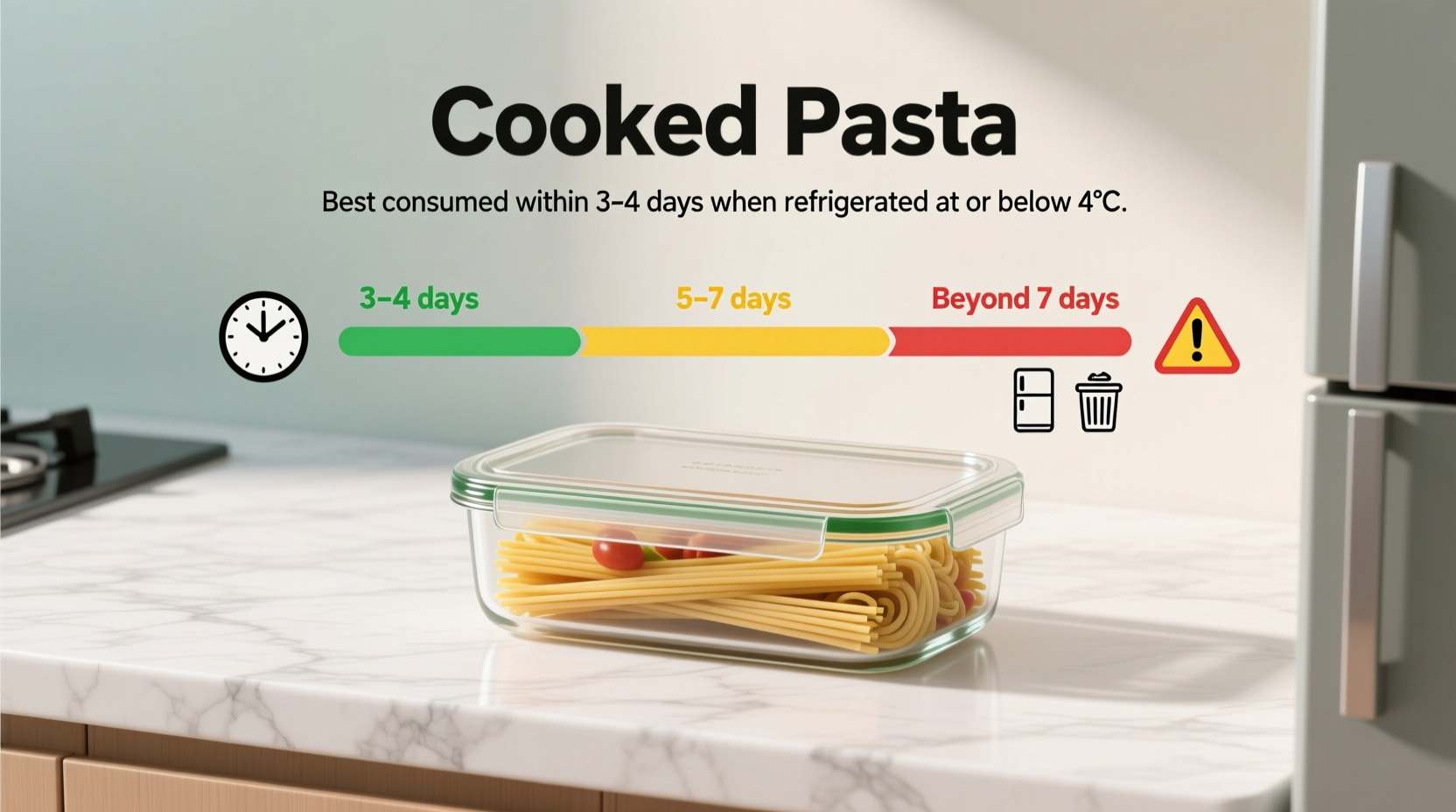Cooked pasta typically remains safe to eat for 3-5 days when properly stored in the refrigerator at or below 40°F (4°C). This timeframe applies to plain pasta and most pasta dishes when stored in airtight containers. Factors like added ingredients, sauce types, and storage methods can affect this window.
Wondering if that leftover spaghetti from last night is still safe to eat? You're not alone. Millions of home cooks face this food safety dilemma weekly. Getting this right matters—improperly stored pasta can harbor dangerous bacteria like Bacillus cereus that cause food poisoning. This guide delivers science-backed storage guidelines so you can enjoy your pasta dishes safely while minimizing food waste.
Why the 3-5 Day Rule Exists: Food Safety Fundamentals
That seemingly harmless container of leftover fettuccine Alfredo becomes a bacterial breeding ground when stored incorrectly. The USDA's Food Safety and Inspection Service explains that cooked starches like pasta enter the "danger zone" (40°F-140°F) where bacteria multiply rapidly. Within just 20 minutes, a single bacterium can become two—and this exponential growth continues unchecked.
| Storage Condition | Maximum Safe Duration | Key Risk Factors |
|---|---|---|
| Refrigerator (≤40°F) | 3-5 days | Temperature fluctuations, container type |
| Room temperature (70°F) | 2 hours | Humidity, exposure to contaminants |
| Room temperature (>90°F) | 1 hour | Accelerated bacterial growth |
| Freezer (0°F) | 1-2 months | Freezer burn, packaging quality |
This data aligns with the FDA Food Code's requirements for potentially hazardous foods. The USDA's Food Safety and Inspection Service emphasizes that cooked pasta's high moisture content and neutral pH create ideal conditions for pathogens when temperature control fails.
Storage Best Practices: From Pot to Container
How you handle pasta immediately after cooking determines its entire shelf life. Follow this timeline for optimal safety:
- 0-2 hours post-cooking: Cool pasta rapidly by spreading on a baking sheet or rinsing with cold water (for salad applications)
- Before refrigerating: Transfer to shallow, airtight containers—never store in the cooking pot
- Refrigerator placement: Store on middle shelves where temperature is most consistent (not the door)
- Temperature verification: Use a refrigerator thermometer to confirm ≤40°F (4°C)
University of Minnesota Extension research shows that dividing large portions into smaller containers reduces cooling time by 60%, significantly decreasing bacterial growth during the critical cooling phase.

Factors That Shorten Pasta's Shelf Life
Not all pasta leftovers share the same expiration clock. These elements accelerate spoilage:
- Cream-based sauces: Dairy ingredients reduce shelf life to 2-3 days
- Meat or seafood additions: Protein-rich dishes should be consumed within 2-3 days
- Fresh herb garnishes: Moisture from herbs creates localized spoilage zones
- Homemade pasta: Higher egg content decreases stability compared to commercial varieties
The Centers for Disease Control and Prevention reports that mixed dishes containing both pasta and protein account for 32% of pasta-related foodborne illness cases, primarily due to improper temperature management.
Spoilage Detection: Beyond the Calendar
When in doubt, trust your senses over the calendar. Discard pasta showing any of these signs:
- Visual changes: Discoloration, especially grayish hue or visible mold spots
- Texture issues: Slimy film or excessive stickiness beyond normal pasta texture
- Odor indicators: Sour, fermented, or "off" smells (fresh pasta should have neutral aroma)
- Taste test (last resort): If other signs are questionable, a small taste reveals sourness
Food science research from Cornell University shows that Bacillus cereus can produce heat-stable toxins that survive reheating, making visual inspection critical even if you plan to reheat leftovers.
Maximizing Shelf Life: Practical Extensions
When you need more than 5 days of storage:
- Freezing method: Portion pasta with sauce in freezer bags, removing excess air
- Thawing protocol: Transfer to refrigerator 24 hours before use—never thaw at room temperature
- Reheating safety: Heat to internal temperature of 165°F (74°C) when serving
- Revitalizing trick: Add 1-2 tablespoons of water when reheating to restore moisture
According to the National Center for Home Food Preservation, properly frozen pasta maintains quality for 1-2 months. The key is eliminating air exposure—use the water displacement method for vacuum-sealing effect in regular containers.
Critical Mistakes That Compromise Safety
Avoid these common errors that put your health at risk:
- The 2-hour myth: "It was only out for 3 hours"—bacteria growth is exponential, not linear
- Container confusion: Using takeout containers with poor seals invites contamination
- Temperature ignorance: Assuming your refrigerator maintains proper temperature
- Cross-contamination: Using the same utensils for fresh and stored pasta
FoodSafety.gov data reveals that 41% of consumers don't regularly check refrigerator temperatures, creating invisible risk zones in their own kitchens. A $10 appliance thermometer provides essential peace of mind.
When Leftovers Become a Health Hazard
Consuming spoiled pasta isn't just unpleasant—it's dangerous. Bacillus cereus produces two types of toxins:
- Emetic toxin: Causes vomiting within 1-6 hours (associated with rice and pasta)
- Diarrheal toxin: Causes diarrhea 6-15 hours after consumption
The FDA warns that these toxins aren't destroyed by reheating. When pasta develops even slight off-odors, it's already produced unsafe toxin levels. When in doubt, throw it out—no meal is worth a trip to the emergency room.











 浙公网安备
33010002000092号
浙公网安备
33010002000092号 浙B2-20120091-4
浙B2-20120091-4